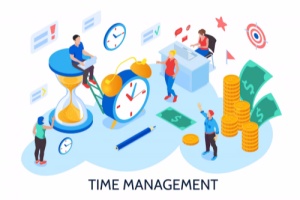Hello and welcome back to the Skills 360 podcast. I’m your host, Tim Simmons, and today, I want to talk about adapting your communication style to your audience.
Think about the different conversations you had at work yesterday, with your boss, with colleagues, with clients, and with your direct reports. Think about how those people spoke to you. Guaranteed, you will notice that these different people had different communication styles. One person might have been cheery and chatty while another was brusque and efficient.
Now, think about how you responded to these people. Was your communication style consistent in all situations? Probably not. And it shouldn’t be! The best workplace communicators are adaptable. They change their style to suit the situation and the audience. And that adaptability is critical for success.
While there isn’t one right way to speak to people, we might say that a broadly useful style is one that is both empathetic and assertive. That is, you know how to listen well and relate to people, but at the same time you state your own position clearly and directly. Think of a sentence like “I can understand how you might feel in this case, but I strongly believe this is the right move.” If you remove either half of that sentence, the understanding or the assertion, you’re losing something important.
But being direct isn’t always appropriate. There’s a sliding scale of directness, in fact, with very direct at one end and highly diplomatic at the other. A direct statement might be something like “Option A is clearly the right choice.” A diplomatic statement might use softening words like “might” or “perhaps” or “could” and stalling words like “well” and “you know.” For example, you might say “You know, we might consider Option A.” So being an adaptable communicator means knowing where on that scale you should be.
There’s also a difference between relational and functional approaches. Relational approaches emphasize trust-building and pleasantness. Taking a relational approach means starting with small talk. A functional approach means focusing on the task at hand and getting down to business. The approach you use will depend on the circumstances and who you’re talking to.
This last point is critical. Your style will change with your audience. With clients, you’ll have to strike the right balance between relational and functional. And the relational aspects of communication will change depending on how long you’ve known them and how close you are. You’ll notice differences in how relational people’s approaches are based on age and industry. You might hear older bankers and lawyers, for example, talk like old friends with their clients.
With the people you supervise, a high degree of friendliness may feel inappropriate. But being overly directive or authoritarian is also on the way out, culturally speaking. A more common approach with employees is likened to “coaching.” So if you want a direct report to increase his sales figures, you might avoid something like “Listen, Brian, I need to see those numbers increase.” Instead, you might try “I’m looking at your numbers here…how can I help get these up? What do you see as the obstacles to increasing your sales?”
Be careful about taking either of these approaches – directive or coaching – into your relationships with colleagues or co-workers. If someone is of roughly the same age and position as you, then a friendly professionalism is in order. Many people are resentful of colleagues who speak to them as though they were speaking to someone they oversee. Of course, if you have a colleague who’s much younger, or junior, then you might serve as a mentor and speak as a coach might.
And what about talking to your boss? This is where it’s really important to read and respond. Follow their lead in terms of style, but understand they can say things you can’t. If your boss likes small talk, then indulge her. If she gets right down to business, then don’t start off with “Hey Jan… what did you get up to on the weekend?”
So, adapting to your audience is important. But you need to be careful. If you are fawning with your boss, aggressive with your direct reports, and surly with your colleagues, you might not be too popular. Taking a wildly different approach with different people might seem two-faced or insincere.
But overall, be flexible! Use a kind but assertive style as a default. But assess who you’re talking to and slide along the scale of diplomatic to direct, and relational to functional. Of course, it’s not just who you’re talking to, but also what you’re talking about in different situations. And that’s what we’ll explore in our next lesson.
That’s all for today. So long. And see you again soon.















